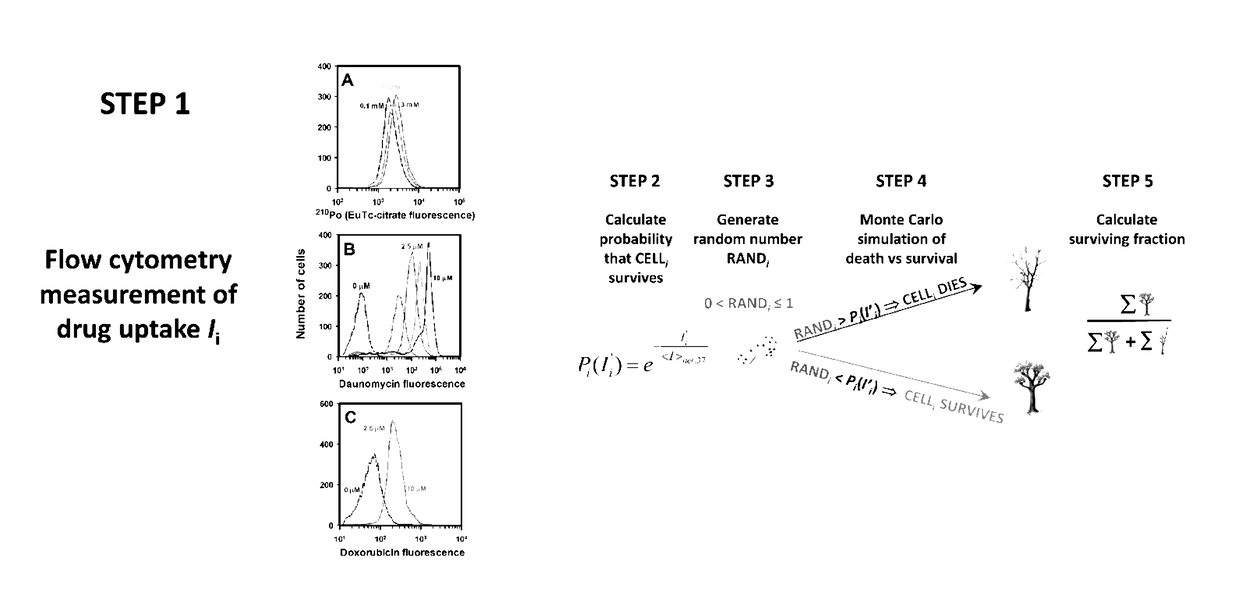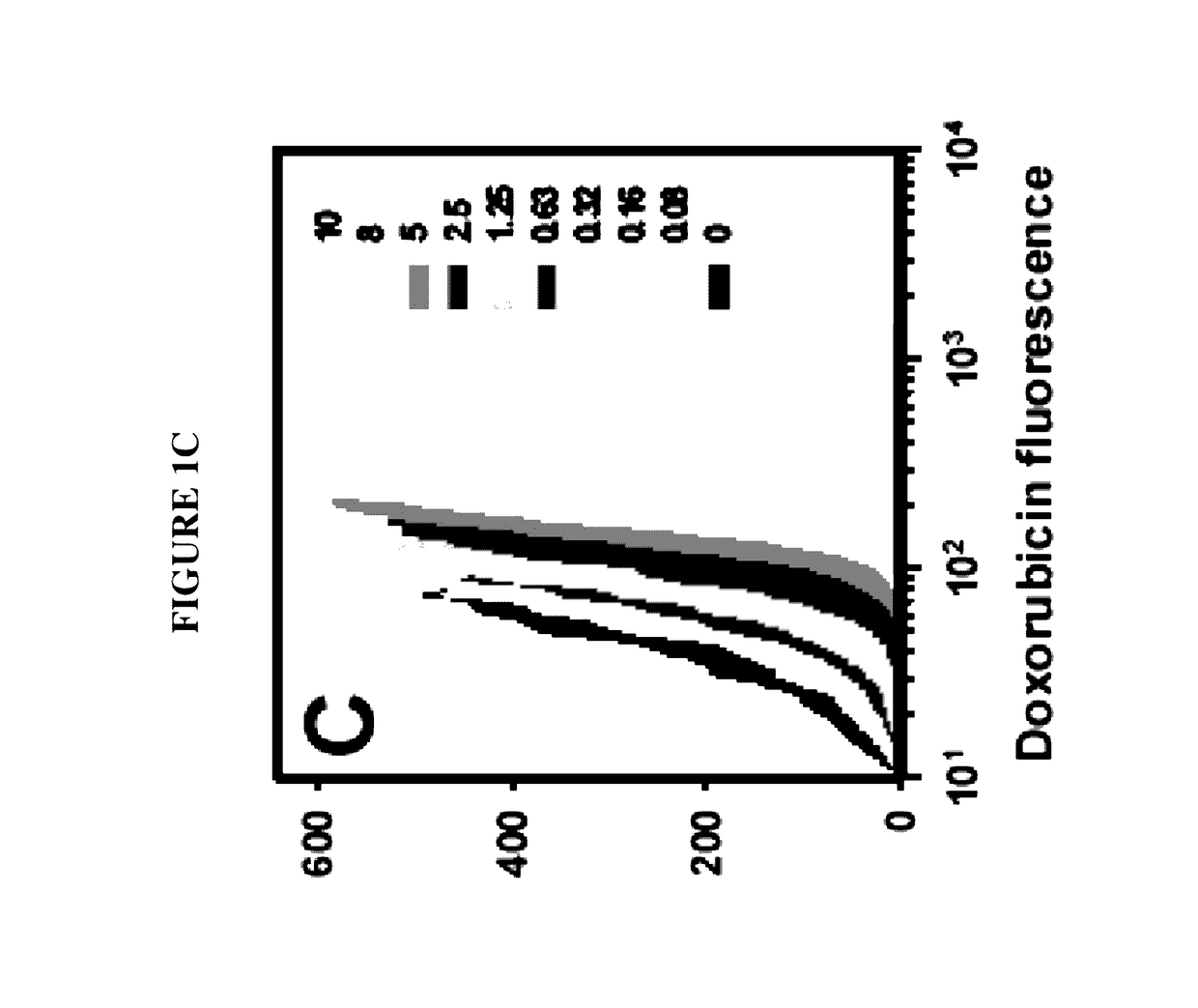Methods and systems for determining the distribution of radiation dose and response
a radiation dose and distribution method technology, applied in radiation therapy, x-ray/gamma-ray/particle irradiation therapy, etc., can solve the problems of frequent lack of interaction between chemotherapeutics and ionizing radiation, inability to demonstrate either an added therapeutic benefit or a reduction of normal tissue toxicity, and increase radiation and drug doses. to achieve the effect of targeting subpopulations of cells
- Summary
- Abstract
- Description
- Claims
- Application Information
AI Technical Summary
Benefits of technology
Problems solved by technology
Method used
Image
Examples
examples
Predicting Cell Survival Based on Flow Cytometry Gating
[0147]Three approaches to modeling the surviving fraction of cells were undertaken. In the first approach, flow-cytometry fluorescence histograms of agent uptake were prepared and the cells were gated relative to control autofluorescence using FlowJo® software (TreeStar). The fractions of agent-negative cells were defined as the proportions of fluorescence spectra that had intensities below the maximum intensities of control samples (i.e. the fraction of fluorescence spectra below maximum autofluorescence). For 210Po, 0.1 mM citrate which corresponded to a nontoxic cellular activity of 0.03 mBq / cell was used for autofluorescence. In this simple approach, the gated subpopulations of agent-negative cells were considered as survivors, whereas gated subpopulations of agent-positive cells were considered dead. The surviving fraction was taken as the number of agent-negative divided by the sum of agent-negative and agent-positive cell...
PUM
 Login to View More
Login to View More Abstract
Description
Claims
Application Information
 Login to View More
Login to View More - R&D
- Intellectual Property
- Life Sciences
- Materials
- Tech Scout
- Unparalleled Data Quality
- Higher Quality Content
- 60% Fewer Hallucinations
Browse by: Latest US Patents, China's latest patents, Technical Efficacy Thesaurus, Application Domain, Technology Topic, Popular Technical Reports.
© 2025 PatSnap. All rights reserved.Legal|Privacy policy|Modern Slavery Act Transparency Statement|Sitemap|About US| Contact US: help@patsnap.com



